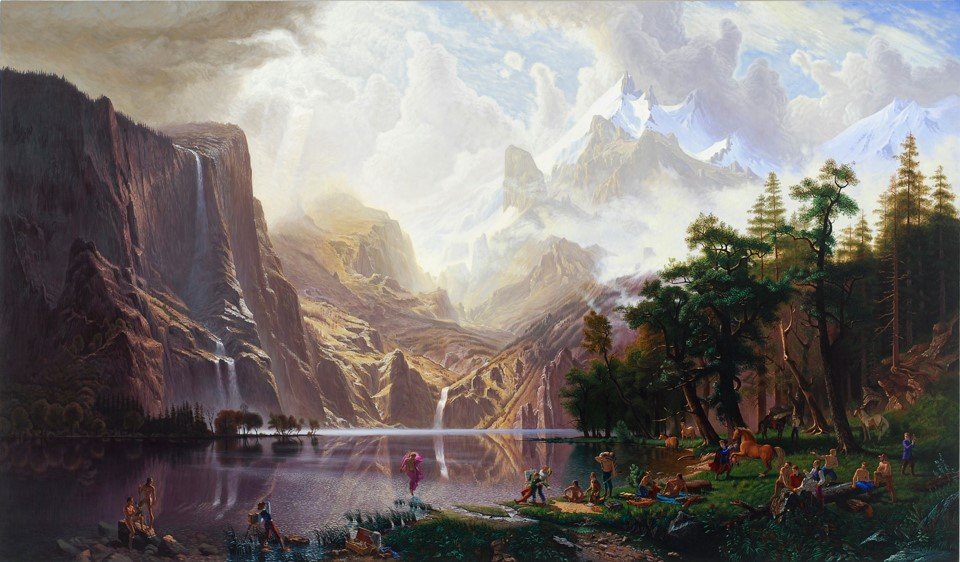Kent Monkman, the influence of Miss Chief Eagle Testickle
/Met museum
A few years ago, I started college with the idea of becoming an art historian. Although that didn’t end up working for me, I still learned a wide variety of things from many different artists. One of which particularly stuck to me, because of the impact he has on today’s society.
Kent Monkman is a very interesting artist, for multiple reasons. He portrays today’s societal issues in his art and speaks from experience as an indigenous artist himself. But why exactly did Kent Monkman become so interesting to me? Maybe it’s the crowded paintings that almost look like they are in motion. Or maybe it’s his famous alter ego, Miss Chief Eagle Testickle. I know, strange name, but try reading it fast, it’s kind of clever. This second self made him look so strange and eccentric.
From an objective point of view, like I had when I first heard of him, this was absolutely fascinating. At that moment, I didn't have all that knowledge about what exactly it meant for Monkman himself, but also for society, to have this kind of representation in art pieces. No doubt he is definitely a unique person, if you have seen any of his “Miss Chief” performances, you know what I mean. But it’s the message in his pieces that make his art all the more relevant.
Montréal museum of fine art
It all started, in 2006, with one of Monkman’s paintings, named Trappers of men. This is the first piece in which I heard of his other identity. In this painting, Monkman represented Miss Chief kind of floating above a body of water, while people in the distance are dazzled at this sight. But to understand what this painting means, it’s also required to understand what Miss Chief herself represents.
Who exactly is Miss Chief Eagle Testickle? Well, she is not simply a different personality, as it is said in Monkman’s biography, this gender-fluid self is “a time-traveling, shape-shifting, supernatural being.” She embodies the point of view of the indigenous people during the beginning of colonial policies, like the treaties and the residential schools.
Monkman has other paintings offering the view of what it was for aboriginal people to be separated from their families, because of religion. Notably, one of them is called The scream (2017), in which Miss Chief does not appear. In this painting you can see children being taken away, to what I can only assume are residential schools. Watching pieces like these, I can really get a sense of what these people went through, the sheer panic being almost tangible. Depicting such strong emotions is, in my opinion, a true proof of talent.
MEt museum
But what I love about Monkman’s alter ego is that it shows kind of an empowerment, representing an entity that empowers the indigenous culture. And this is also what makes him very relevant for the society, because the genocide of indigenous people is something that we still deal with today.
Although residential schools closed down, there are still a lot of issues people in indigenous reserves go through. And this is why Kent Monkman’s art is so crucial, especially with his representation of colonization through Miss Chief Eagle Testickle.
I’m Chloé (with an accent on the e), I’m a 24 year-old who lives in Québec so my first language isn’t English, apologies it sometimes gets chaotic. I’m very passionate about anything art or literature related. I love reading, painting, but most of all, I love writing. I write everyday, and my biggest dream is to have my own bilingual publishing house with my best friend and publish a multitude of books both in French and in English.






